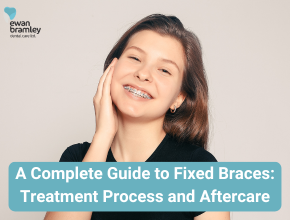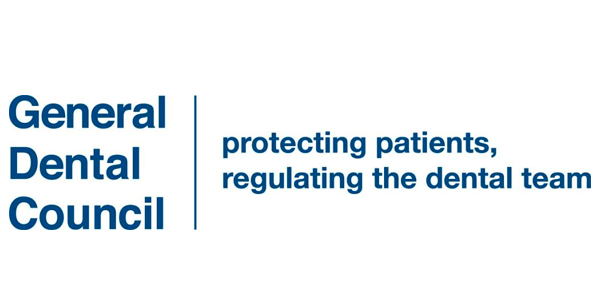For decades, fixed braces have been a reliable and effective solution for orthodontic issues. If you are considering fixed braces or have just begun your treatment, it is essential to understand the process and how to care for your braces to achieve the best results. This guide will walk you through the journey from the initial consultation to the final stage of aftercare.
What Are Fixed Braces?
Fixed braces are a type of orthodontic appliance made up of brackets, wires, and elastic bands that are attached to your teeth for the duration of the treatment. Unlike removable aligners, fixed braces remain in place, exerting continuous pressure to gradually move teeth into the desired position. They are a popular choice for both teens and adults who want to correct issues such as crooked teeth, gaps, or bite misalignments.
The Treatment Process
1. Initial Consultation:
The journey to a perfect smile begins with an initial consultation with one of our dentists. During this appointment, they will assess your teeth, gums, and jaw structure. This may involve taking X-rays, photos, and impressions of your teeth to create a tailored treatment plan. The dentist will discuss your specific needs, the type of braces that would work best for you, and the estimated duration and cost of the treatment.
2. Fitting the Braces/Smile Design:
Before fitting the brace you may need to come in for a smile design or one more consultation to finalise the treatment plan and to make sure you fully understand the treatment process! Once the treatment plan is finalised, your braces will be fitted. This process usually takes one to two hours. The dentist will clean and dry your teeth, then apply a special adhesive to hold the brackets in place. The brackets are then attached to each tooth, and the archwire is threaded through the brackets and secured with elastic bands. You might feel some pressure during this process, but it shouldn’t be painful.
3. Regular Adjustments:
Throughout the treatment, you will need to come back to the practice every 4-8 weeks for adjustments. During these appointments, we will tighten the wires, change elastic bands, and monitor the progress of your treatment. These adjustments ensure that your teeth continue to move according to plan. Some discomfort is common after adjustments, but it typically subsides within a few days.
4. Completion of Treatment:
Once your teeth have moved into the desired position, your dentist will remove the braces. This process is quicker than the fitting and involves carefully removing the brackets and cleaning off any remaining adhesive. After the braces are removed, impressions may be taken to create a retainer.
5. Retainer Fitting:
Retainers are crucial to maintaining your new smile. They help keep your teeth in their new position while the surrounding bone stabilises. We will usually attach a permanent retainer on the back of your teeth to keep them in place and a removable retainer to wear at night time. The last thing we want is your teeth moving!
Take care of your teeth during and after your treatment
Proper aftercare is essential to ensure that your braces treatment is effective and that your teeth remain healthy throughout the process. Here are some key tips:
1. Oral Hygiene:
- Brushing: Brush your teeth after every meal using a soft-bristled toothbrush and fluoride toothpaste. Pay extra attention to cleaning around the brackets and wires to prevent plaque buildup.
- Flossing: Use a floss threader or orthodontic flosser to clean between your teeth and under the wires. This helps to remove food particles and plaque that brushing alone might miss.
- Mouthwash: Rinse with an antibacterial mouthwash to reduce the risk of gum disease and cavities.
2. Diet Adjustments:
- Avoid Hard and Sticky Foods: Foods like nuts, popcorn, chewing gum, and toffees can damage your braces or get stuck in the brackets.
- Cut Up Hard Fruits and Vegetables: Instead of biting directly into apples or carrots, cut them into smaller pieces to avoid putting too much pressure on the braces.
- Limit Sugary Foods and Drinks: High-sugar foods and drinks can lead to tooth decay, especially around the brackets where it is harder to clean.
3. Managing Discomfort:
- Soreness: It is common to experience some soreness after getting your braces fitted or following adjustments. Over-the-counter pain relievers can help, as can eating soft foods and rinsing with warm salt water.
- Orthodontic Wax: If any part of the braces irritates the inside of your mouth, applying orthodontic wax can provide relief by covering sharp edges. We provide you with a care bag which includes orthodontic wax.
4. Dealing with Emergencies:
- Loose Brackets or Wires: If a bracket or wire becomes loose, contact your orthodontist as soon as possible. In the meantime, you can use orthodontic wax to secure the bracket or move a loose wire back into place with a clean pencil eraser.
- Lost Elastic Bands: If an elastic band comes off, it can often be replaced at your next appointment. However, if multiple bands come off, it is best to schedule a visit to your orthodontist to avoid delaying your treatment.
5. Retainer Care:
- Wear as Directed: Follow your orthodontist’s instructions on how often to wear your retainer. This is crucial for maintaining the results of your treatment.
- Cleaning: Clean your retainer regularly with a toothbrush and mild soap or retainer cleaner. Avoid using hot water, as it can warp the retainer.
Conclusion
Fixed braces are a proven method for achieving a beautiful and healthy smile. By understanding the treatment process and adhering to proper aftercare, you can ensure that your orthodontic journey is as smooth and effective as possible. Always follow your orthodontist’s advice and maintain good oral hygiene to enjoy the best results from your fixed braces treatment.






